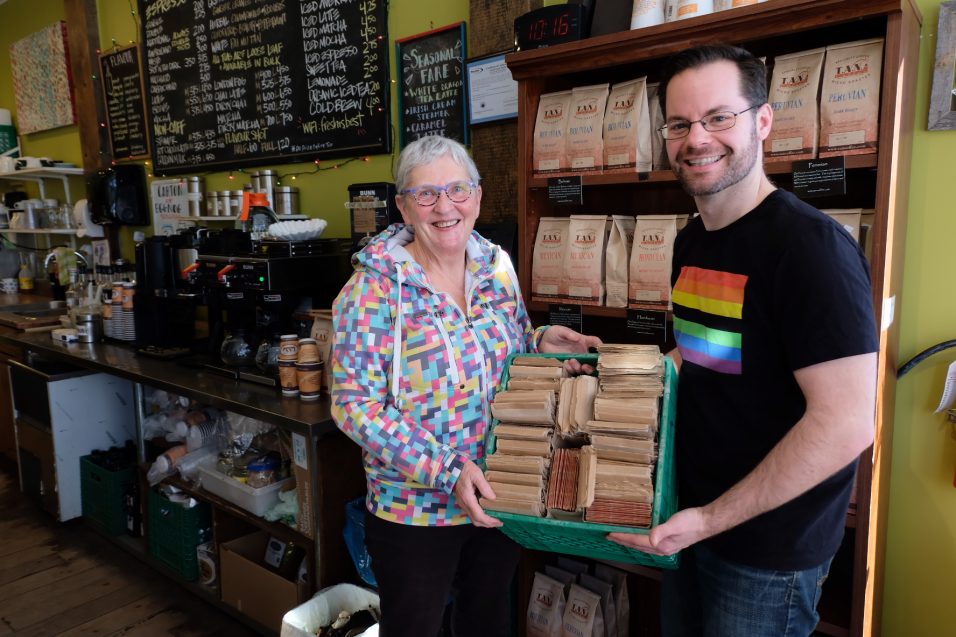What’s Growing at the Harriet Irving Botanical Gardens: Coffee Bag Plants
By Melanie Priesnitz, Conservation Horticulturist
You can tell a lot about a person by looking at their recycling. If you’re a person who enjoys sampling local libations you will likely have a lot of glass bottles. If you’re a gardener, you’re apt to have an enormous pile of plastic plant pots. These are my guilty pleasures: brown glass bottles and small black and green thin plastic pots. I have made it my mission this year to only drink local beer that I can purchase in a refillable bottle and now I have to find a way to bring home my new plant friends in an environmentally-friendly way. It’s remarkable how many tiny pots end up at the side of my house each spring. I generally hold onto them well into the summer thinking that I’ll find a way to reuse them, but inevitably by big garbage day in the fall, I purge and guiltily send them to the curb.
At this year’s annual Friends of the Acadian Forest Native Plant Sale, we have decided to take a stab at reducing plastic waste. Our volunteers have been busy all winter planning for the plant sale and squirrelling away over 3000 coffee bags. Thanks to the help, inspiration, and generosity of the folks at T.A.N. Coffee we will now be selling our plants in upcycled coffee bags. Using repurposed plant pots will not only reduce costs for our non-profit group, it will also keep thousands of pots out of landfill and recycling programs. The group would much rather spend our money on plant conservation and education projects than on contributing to Canada’s waste problem. Statistics Canada’s website indicates that in 2017 Canadians purchased more than 37 million potted plants: that’s a preposterous number of plastic pots!
The unbleached paper bags that we’ll soon be potting up with native plants have a polylactic acid (PLA) lining that keeps coffee fresh and also serves to make the bags sturdy enough to hold wet soil. PLA is made from fermented plant starches (usually corn or sugar) and is said to be 100% biodegradable. Even though technically you could plant your paper bag plant right in the ground, I suggest removing it and planting directly in the earth. We conducted trials last summer and after 2 months the coffee bag planters were still completely intact and holding soil. Root development will be more rapid without the paper barrier and the bags will biodegrade much more rapidly in a high heat industrial compost facility. If you are saving coffee bags at home, be sure to remove the metal twist ties before putting them in the compost bin.
We’re excited to be able to offer this plastic alternative at this year’s plant sale and will continue to see how we can further reduce our footprint and be more sustainable each year. We challenge our visitors to help us make the spring event as green as possible by bringing your own baskets, bags, wheelbarrows, or whatever you want to haul your plants home in, thus illuminating the need for cardboard or plastic trays. Mark Saturday May 4 on your calendar for the Friends of the Acadian Forest Native Plant Sale and join us on the countdown to the first day of spring which is just 3 days after Saint Patrick’s Day, and definitely worth celebrating!
Photo: Volunteer Carole Donaldson picking up bags from Mike Butler at T.A.N. in Wolfville.
Harriet Irving Botanical Gardens
Acadia University
botanicalgardens.acadiau.ca
